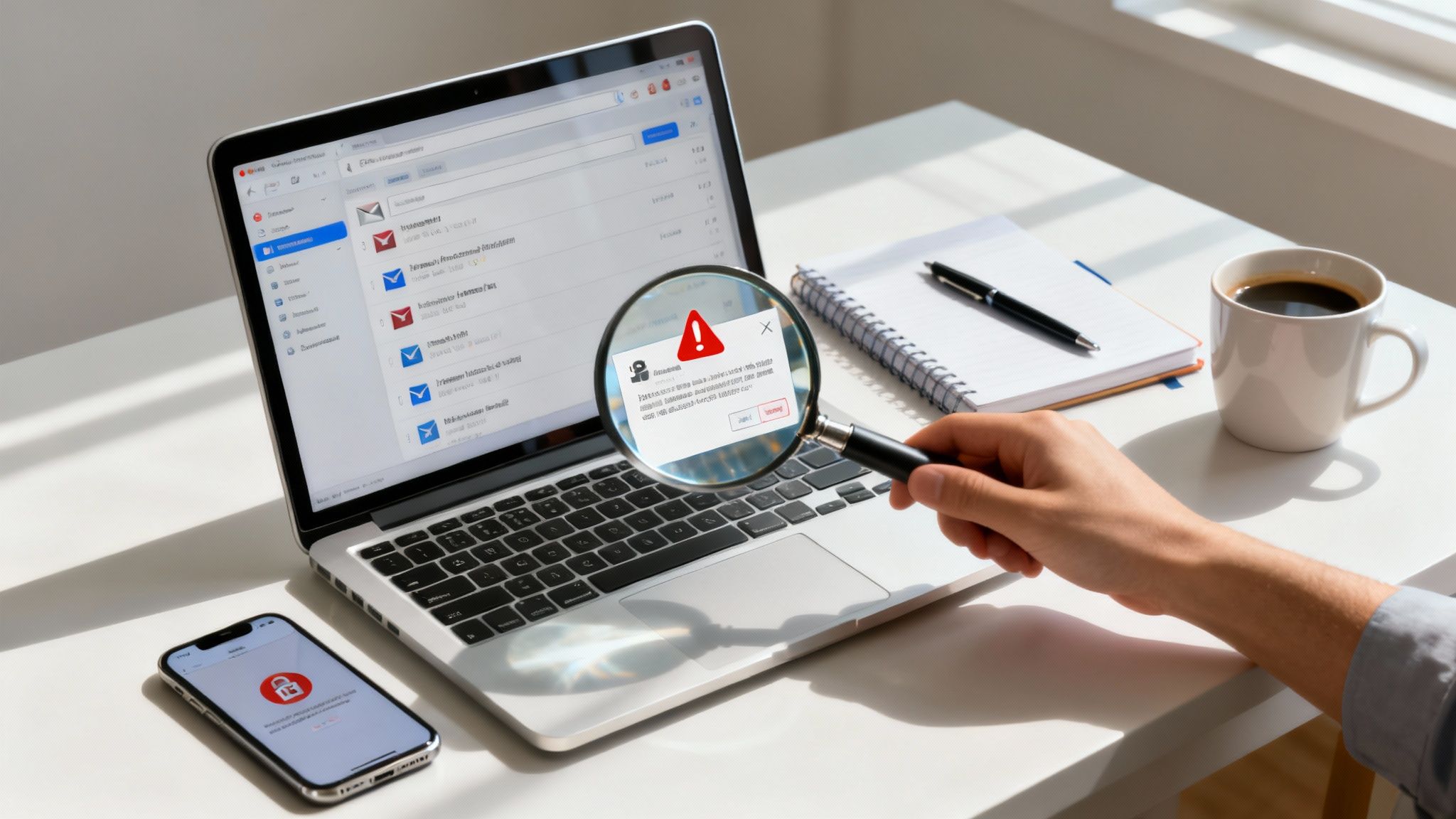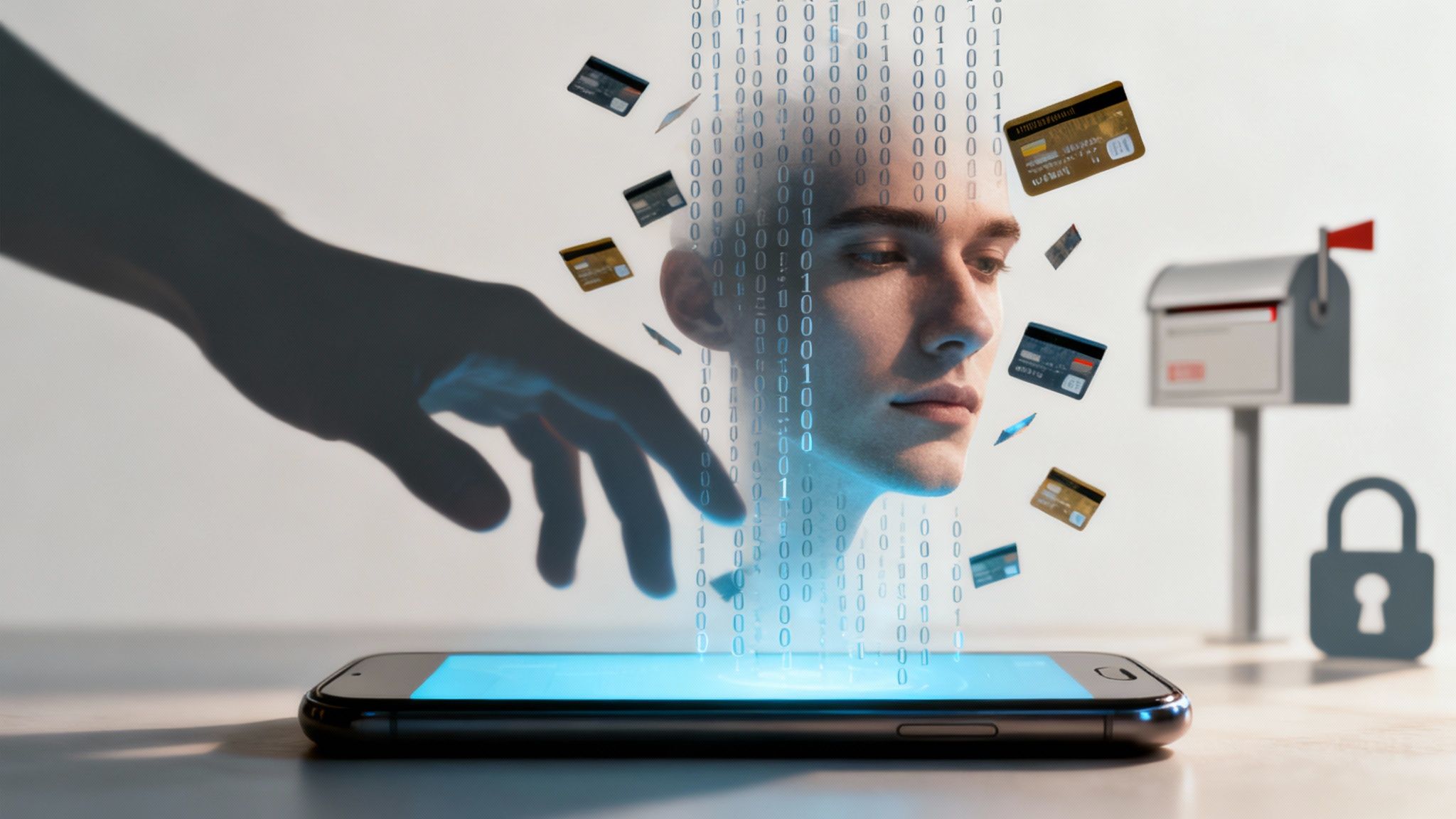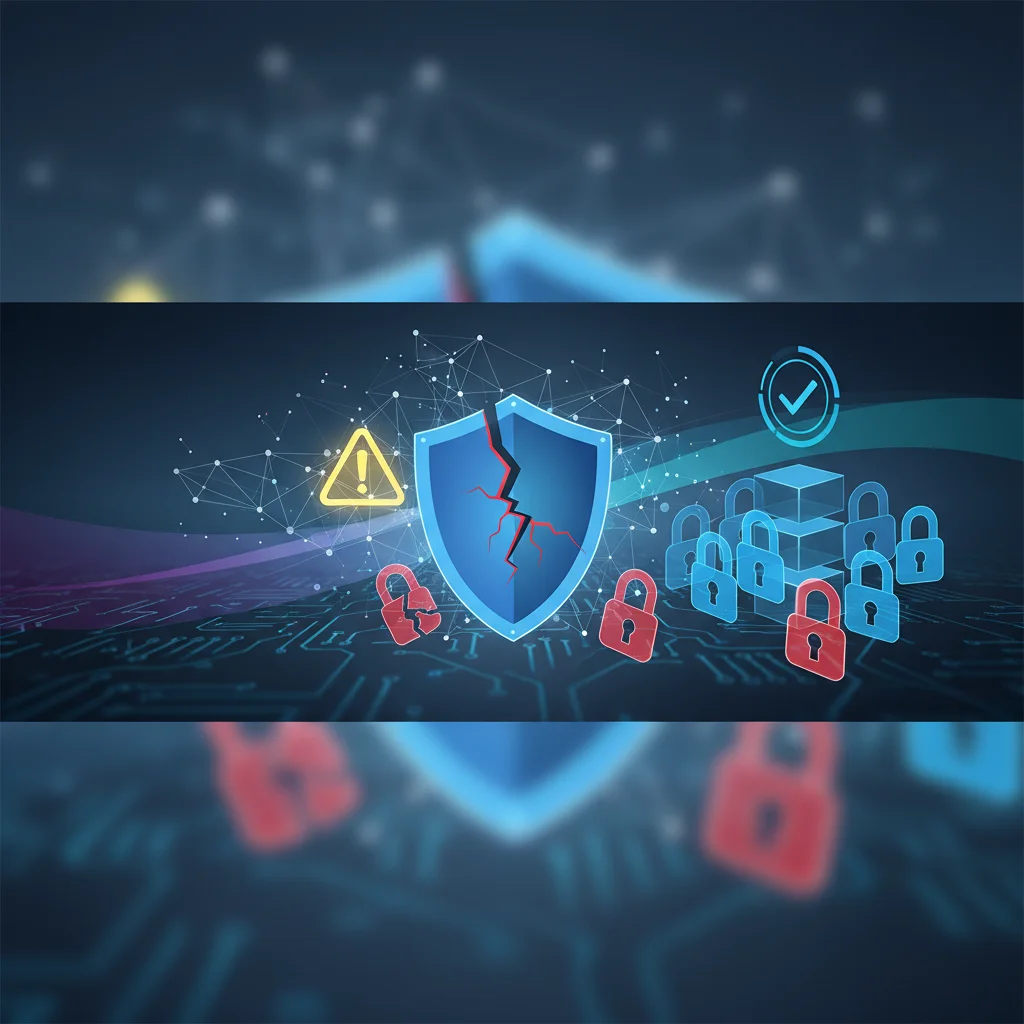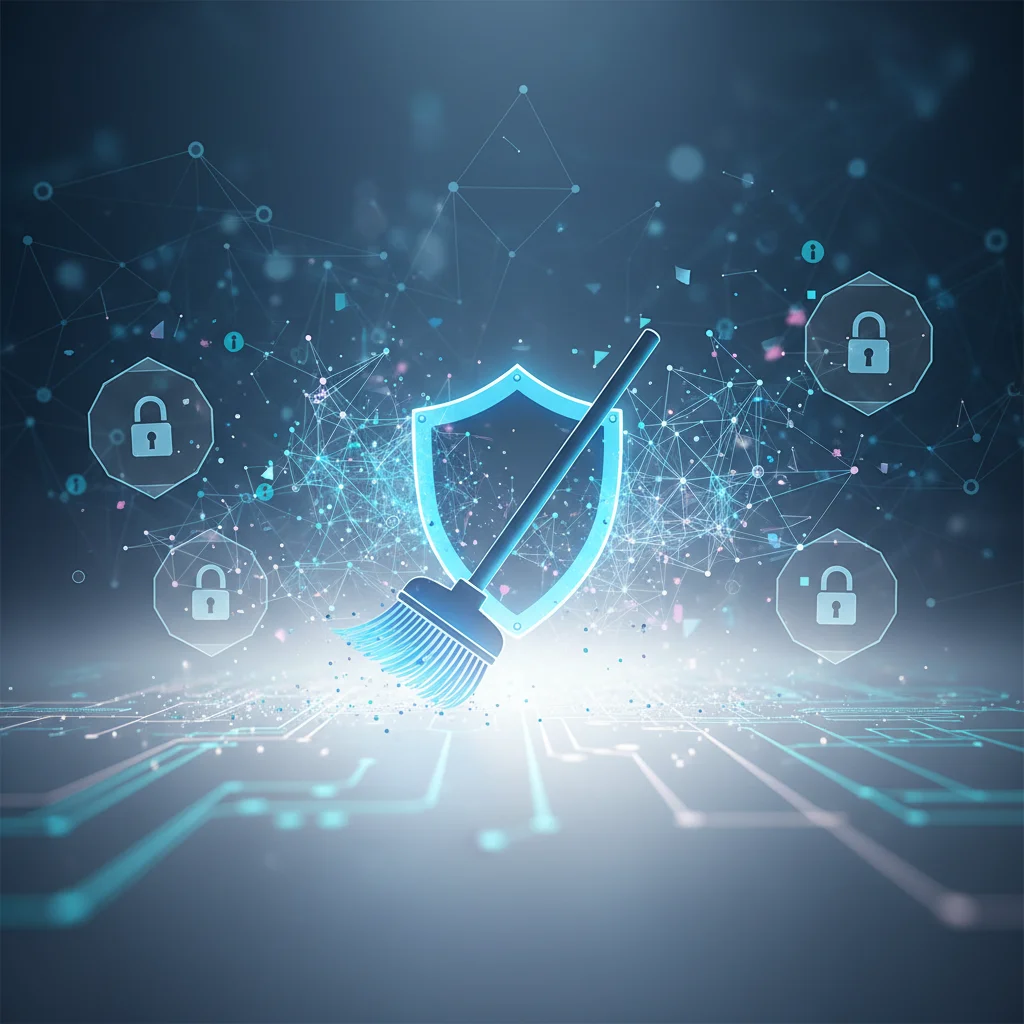· Digital Footprint Check · Content Marketing · 16 min read
How to Check If Your Email Has Been Hacked
Think your email is hacked? Learn how to check if your email has been hacked using our guide on spotting red flags and using powerful security tools.

That gut feeling something is wrong with your email is usually the first sign. Before you even think about running scans or using fancy tools, the quickest way to know if your account has been hacked is to look for the obvious clues—the digital breadcrumbs hackers almost always leave behind.
Strange emails in your “Sent” folder that you know you didn’t write? Login alerts from cities you’ve never visited? If you’re seeing signs of suspicious activity, it’s a massive indicator someone else has their hands on your account.
Key Warning Signs of a Compromised Email

A compromised email rarely stays quiet for long. Hackers are there for a reason, and their actions inevitably create ripples you can spot if you know where to look.
These initial clues are so important because they give you a chance to act fast. A classic example is a friend messaging you, “Hey, did you mean to send me this weird link?” This often means a hacker is actively using your account to spread malware or phishing scams, taking advantage of the trust your contacts have in you.
Spotting the Red Flags Early
Another huge giveaway is getting notifications for password changes you never requested. If an email lands in your inbox confirming a password reset for your bank or social media account, and you didn’t do it, that’s a serious red flag. It means a hacker is likely trying to lock you out of other critical services tied to that email address.
The goal of an attacker is often not just your inbox, but everything connected to it. Your email is the key to your entire digital life, making these early warning signs absolutely critical to notice.
To make it easier, I’ve put together a quick rundown of the most common signs that something is wrong.
Red Flags Your Email Account Is Hacked
This table summarizes the most frequent indicators that your email has been compromised and what each sign likely means for your account’s security.
| Warning Sign | What It Likely Means |
|---|---|
| Emails you didn’t send | A hacker is using your account to send spam or phishing links to your contacts. |
| Login alerts from unknown locations | Someone has your password and is actively accessing your account from a different city or country. |
| Password reset requests you didn’t make | An attacker is trying to take over other accounts linked to your email, like social media or financial services. |
| Missing emails from your inbox | Malicious rules may have been set up to automatically delete or forward important messages (like security alerts) to hide their tracks. |
Recognizing these signals helps you understand the hidden dangers of your digital footprint, as attackers often use publicly available information to get their foot in the door. By staying vigilant, you can catch a breach before it turns into a full-blown disaster.
Investigating Your Account’s Login Activity

If you have a gut feeling that something’s wrong, your email account’s settings are the first place to look for hard evidence. Every single login, every connected app, and every settings change leaves a digital footprint. Learning how to read these logs is the most direct way to confirm if an intruder has been inside your account.
Most major email providers, like Gmail and Outlook, keep a detailed history of your account activity. You can usually find this tucked away in your security settings, under a tab like “Recent activity” or “Security events.” This log gives you a rundown of every recent login, showing the device, its general location, and the exact time it happened.
Decoding Your Login History
When you’re scanning your login history, you’re on the hunt for anything that looks out of place. A login from another country while you were sound asleep is a dead giveaway. But sometimes, the clues are much more subtle.
Pay close attention to the IP addresses and the devices listed. Do you see an Android login when you’re a dedicated iPhone user? What about an access point from a city or internet provider you’ve never heard of? These are the little inconsistencies that scream “red flag.”
Just last year, a client of mine discovered logins originating from a city thousands of miles away. It turned out a hacker had been quietly monitoring their account for weeks, sifting through messages for financial details. That login history was the undeniable proof we needed to lock the account down.
Pro Tip: Don’t freak out if you see a login from a nearby city you don’t recognize. Mobile networks and ISPs can sometimes report slightly wonky locations. The real concern is activity that’s geographically impossible or involves a device you know you don’t own.
Checking for Hidden Rules and Sneaky Apps
Hackers don’t just log in; they often set up backdoors to maintain access or cover their tracks. A classic move is creating an email forwarding rule that secretly sends a copy of every message you get straight to their own inbox. You’ll want to check your “Filters and Blocked Addresses” or “Rules” settings for anything you don’t remember creating.
Finally, take a hard look at all the third-party apps connected to your account. It’s easy to grant access without a second thought, but a malicious app can be given the keys to read, send, and even delete your emails.
- For Google: Head to your Google Account security settings and find “Third-party apps with account access.”
- For Microsoft Outlook: In your privacy settings, look for “Apps and services you’ve given access.”
If you spot an app you don’t recognize, revoke its permissions immediately. If you’ve done all this and still can’t shake the feeling something is wrong, or if you suspect a more sophisticated breach, it might be time to call in the experts. A skilled private cyber investigator can provide the deep forensic analysis needed to get to the bottom of it.
Look Beyond Your Inbox: Using Data Breach Checkers to Find Leaks
Sometimes, the answer to “how do I know if my email was hacked?” isn’t in your sent folder or login history. The scary truth is your email and password can be compromised without a hacker ever touching your actual inbox.
This happens all the time. A service you signed up for years ago gets breached, and suddenly, the login details you used are floating around on the dark web. Cybercriminals bundle these massive lists of emails and passwords and sell them to the highest bidder.
From there, they launch credential stuffing attacks. It’s an automated process where bots take your leaked email and password and try them on hundreds of other popular sites—banking, social media, shopping—hoping you’ve reused that same password elsewhere.
The scale of this is staggering. By 2025, the global cost of cybercrime is expected to hit $10.5 trillion a year, with these automated attacks being a huge driver. For more on this, check out the stats on the growth of cybercrime at Deepstrike.io. This isn’t a problem you can just ignore anymore.
How to Safely Check for Breaches
So, how do you find out if your data is part of the problem? Fortunately, there are reputable tools built for this exact purpose.
Services like Have I Been Pwned? are essentially massive libraries of data from hundreds of known breaches. You can pop your email address in and see if it’s shown up in any of them. Think of it as your first line of defense for uncovering exposures you never knew about.
For a quick, secure scan, you can also use our own free breach checker tool.
Here’s what a typical results page from a service like Have I Been Pwned? looks like. It’s straightforward and tells you exactly where your data was exposed.
As you can see, it doesn’t just give you a “yes” or “no.” It lists the specific breaches your email was found in and often details what kind of data was stolen (passwords, usernames, physical addresses, etc.).
Important: Finding your email on one of these lists doesn’t guarantee your account is actively being used by a hacker right now. What it does mean is that your credentials are out in the wild, making you a much easier target.
If you find your email on a breach list, don’t panic. Just act. Here’s your immediate to-do list:
- Change your password immediately. Start with the site that was breached, but more importantly, change it on any other account where you used that same password.
- Turn on multi-factor authentication (MFA). This is a non-negotiable step. It adds a layer of security that stops hackers even if they have your password.
- Stay alert. Now that you know your email is confirmed as active and part of a breach, you’re more likely to receive targeted phishing emails. Be extra skeptical of any unexpected messages asking for information.
Spotting Sophisticated Phishing Attacks

Forget the old-school phishing emails riddled with obvious spelling mistakes. Those are becoming a thing of the past. Today’s attacks are slick, professional, and often use AI to craft messages that perfectly mimic legitimate emails from services you actually use. Spotting them means you have to look beyond the surface.
These advanced scams are all about psychology. They create a powerful sense of urgency—not with big, scary threats, but with subtle, believable nudges. Think about an email warning of a “failed payment” or a “security alert.” It’s designed to make you panic and click before you have time to think it through.
Beyond the Sender’s Name
One of the most common and effective tricks in the book is domain spoofing. A scammer might use an email address like billing@paypaI.com (with a capital “i” swapped for the “L”) or something like support@microsoft-security.com. These tiny variations are incredibly easy to miss, especially on a phone screen or when you’re in a rush.
A well-crafted phish can fool anyone, even security experts. Tiredness, distraction, or a moment of weakness is all an attacker needs to succeed. Always take a moment to verify before you click.
Another sneaky tactic is using information from previous data breaches to make their emails feel more personal. An attacker might include an old username of yours or the last four digits of a credit card that was leaked from a completely different service. This little bit of personalization makes it so much harder to dismiss the message as just another random scam.
Anatomy of a Modern Phish
To stay safe, you need to train your eye to catch the subtle red flags that give these scams away.
Here’s what to watch for:
- Unusual Urgency: Does the email pressure you to act right now to avoid some kind of penalty, like your account being suspended?
- Slight Domain Variations: Look closely at the sender’s full email address. Before you click any links, hover your mouse over them to see the actual destination URL.
- Generic Greetings: Be suspicious of emails that start with “Dear Valued Customer” when the real service almost always uses your actual name.
- Unexpected Attachments: Never, ever open attachments from an unsolicited email, especially if they claim to be invoices or security reports you weren’t expecting.
Phishing is still the number one way hackers get into our accounts. In fact, roughly 80% of phishing campaigns are designed to snatch credentials for cloud services like Microsoft 365 and Google Workspace. The explosion of AI-powered phishing tools has only made this threat worse.
To really get ahead of this, understanding robust phishing attack prevention strategies is non-negotiable, especially when you’re trying to spot these more advanced attempts.
Your Immediate Action Plan After a Hack
That sinking feeling when you realize your email has been hacked is awful. But this is the moment for quick, decisive action to limit the damage. Don’t waste time trying to figure out how it happened—that forensic work can come later. Right now, your entire focus needs to be on containment and recovery.
The very first thing you need to do is change your password. Think of it as slamming the door shut on the intruder. Make the new one strong, unique, and something you’ve never used for any other account. This one move is the single most critical step in taking back control.
Next, you have to sever every connection the hacker has to your account. Dive into your security settings and find the option to log out of all active sessions. This is a powerful move that forces every single device—including theirs—to re-authenticate with the new password you just created. It’s like changing the locks on your house and making sure no old keys are still floating around.
This infographic breaks down that essential recovery process.

Running through this sequence—password change, then signing out everywhere—is how you start building a security wall to reclaim your account.
Bolstering Your Defenses
With the immediate threat handled, it’s time to reinforce your digital fortress. If you haven’t already, enable multi-factor authentication (MFA) right away. This adds a crucial layer of security by requiring a second form of verification, making it exponentially harder for anyone to get back in, even if they manage to steal your new password down the line.
It’s not an exaggeration to say that by enabling MFA, you cut your risk of a successful account takeover by over 99.9%. After changing your password, it’s the single most effective security measure you can take.
Finally, do a quick audit of your account recovery information. You need to verify that your backup email address and phone number are still yours. Attackers love to change these details to lock you out for good. It’s also a good idea to send a heads-up to your contacts, letting them know your account was compromised and to be wary of any suspicious messages they might have received from “you.”
Securing Your Account for the Long Term
Okay, you’ve regained control of your account. Take a deep breath. That feeling of relief is great, but the real work starts now. Think of this as a wake-up call—a chance to shift from reactive panic to a proactive, long-term defense strategy.
Let’s turn this stressful event into a valuable lesson and build a digital fortress around your email, making sure it never happens again.
First thing’s first: if you aren’t using a password manager, now is the time. Seriously. These tools are non-negotiable for good security. They create and remember incredibly complex, unique passwords for every single site you use. This one change single-handedly neutralizes the risk of password reuse, which is how a data breach on one random website so often leads to your important accounts getting compromised.
Upgrading Your Security Protocol
Next, let’s talk about multi-factor authentication (MFA). If you’re still getting verification codes sent to you via SMS text message, it’s time for an upgrade. Hackers are getting frighteningly good at tricking mobile carriers into swapping your SIM card to a device they control, giving them direct access to your texts.
Switch to a more robust method instead:
- Authenticator Apps: Apps like Google Authenticator or Authy generate time-sensitive codes right on your phone. They aren’t vulnerable to SIM-swapping.
- Physical Security Keys: For the highest level of protection, nothing beats a hardware key like a YubiKey. It makes your login process phishing-proof because a physical device is required.
Think of your email security as an ongoing practice, not a one-time fix. It’s a habit. Just like you check your bank statements, you should get into a routine of regularly checking your account settings, connected apps, and any weird forwarding rules.
Finally, make security a regular part of your digital life. Don’t wait for another scare. Proactively using top tools for monitoring your digital footprint can alert you to new exposures before a criminal finds them.
By building these habits, you’re not just fixing a hack—you’re building a truly resilient online presence.
Got some questions rattling around in your head? You’re not alone. Even with the best plan, some nuances of email security can feel a bit murky. Let’s clear things up.
Can My Email Be Hacked Without My Password?
You bet it can. It’s a scary thought, but hackers don’t always need to crack your password.
A common backdoor is through connected third-party apps. If one of those apps has sloppy security or asks for way too much permission, it can become a gateway. Another sneaky trick is OAuth phishing, where a malicious link doesn’t ask for your password but instead tricks you into granting account access directly.
They can even steal session cookies from your browser, which basically tells a service like Gmail, “Hey, this person is already logged in,” letting them waltz right past the password screen. It’s a good reason to be ruthless about reviewing app permissions and to treat any unexpected access request with extreme suspicion.
What If a Breach Checker Finds My Email?
Finding your email on a breach list is a major red flag, but it doesn’t mean a hacker is actively reading your inbox right this second. What it does mean is that your email, paired with an old password, is floating around the dark web.
Think of it this way: Hackers treat those leaked lists like a master key. They run automated “credential stuffing” attacks, trying that old email/password combo on every popular site they can think of—your bank, Amazon, social media, you name it.
If you reused that password anywhere else, those accounts are now wide open. The only move is to get ahead of it. Change the password for the service that was breached, and more importantly, change it everywhere else you might have used it.
Is Changing My Password Enough to Stop a Hacker?
Changing your password is the critical first step—it slams the front door shut. But a savvy hacker might have already propped open a window.
A simple password change isn’t always enough. Once they’re in, they can set up backdoors to maintain their access long after you’ve locked them out.
You need to do a full security sweep immediately after changing your password:
- Revoke access for any third-party apps you don’t recognize or trust.
- Hunt for hidden forwarding rules or filters that are secretly sending copies of your emails to another address.
- Double-check your recovery info. Make sure they haven’t swapped your recovery phone number or email with their own.
- Sign out of all active sessions. This forces every device to log back in with the new password, kicking out anyone who was still lurking.
Only after you’ve gone through this checklist can you be reasonably sure the threat is gone for good.
Ready to see your full digital footprint and uncover hidden risks? Digital Footprint Check scans the web and dark web to show you exactly where your data is exposed, giving you the power to protect your online identity. Get your free, instant report at https://digitalfootprintcheck.com.



